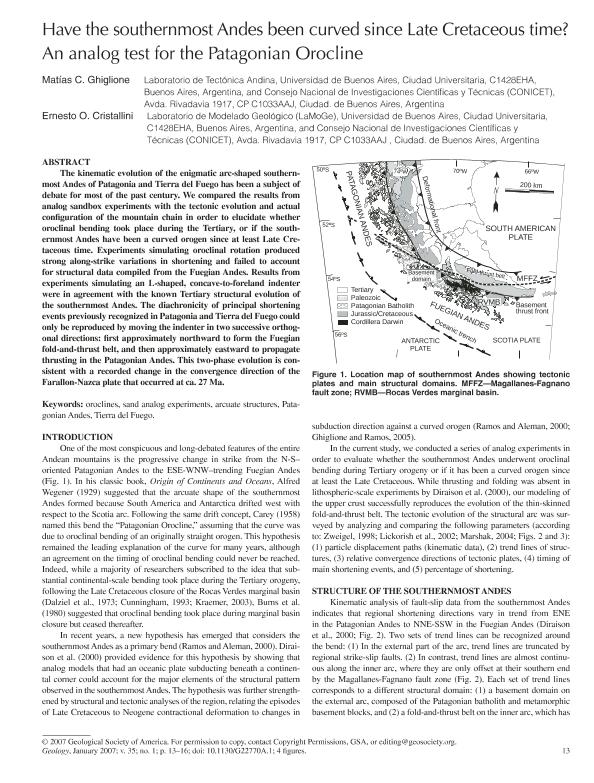Artículo
Have the southernmost Andes been curved since Late Cretaceous time? An analog test for the Patagonian Orocline
Fecha de publicación:
01/2007
Editorial:
Geological Society of America
Revista:
Geology
ISSN:
0091-7613
Idioma:
Inglés
Tipo de recurso:
Artículo publicado
Clasificación temática:
Resumen
The kinematic evolution of the enigmatic arc-shaped southernmost Andes of Patagonia and Tierra del Fuego has been a subject of debate for most of the past century. We compared the results from analog sandbox experiments with the tectonic evolution and actual configuration of the mountain chain in order to elucidate whether oroclinal bending took place during the Tertiary, or if the southernmost Andes have been a curved orogen since at least Late Cretaceous time. Experiments simulating oroclinal rotation produced strong along-strike variations in shortening and failed to account for structural data compiled from the Fuegian Andes. Results from experiments simulating an L-shaped, concave-to-foreland indenter were in agreement with the known Tertiary structural evolution of the southernmost Andes. The diachronicity of principal shortening events previously recognized in Patagonia and Tierra del Fuego could only be reproduced by moving the indenter in two successive orthogonal directions: first approximately northward to form the Fuegian fold-and-thrust belt, and then approximately eastward to propagate thrusting in the Patagonian Andes. This two-phase evolution is consistent with a recorded change in the convergence direction of the Farallon-Nazca plate that occurred at ca. 27 Ma.
Archivos asociados
Licencia
Identificadores
Colecciones
Articulos(IDEAN)
Articulos de INSTITUTO DE ESTUDIOS ANDINOS "DON PABLO GROEBER"
Articulos de INSTITUTO DE ESTUDIOS ANDINOS "DON PABLO GROEBER"
Citación
Ghiglione, Matias; Cristallini, Ernesto Osvaldo; Have the southernmost Andes been curved since Late Cretaceous time? An analog test for the Patagonian Orocline; Geological Society of America; Geology; 35; 1; 1-2007; 13-16
Compartir
Altmétricas




